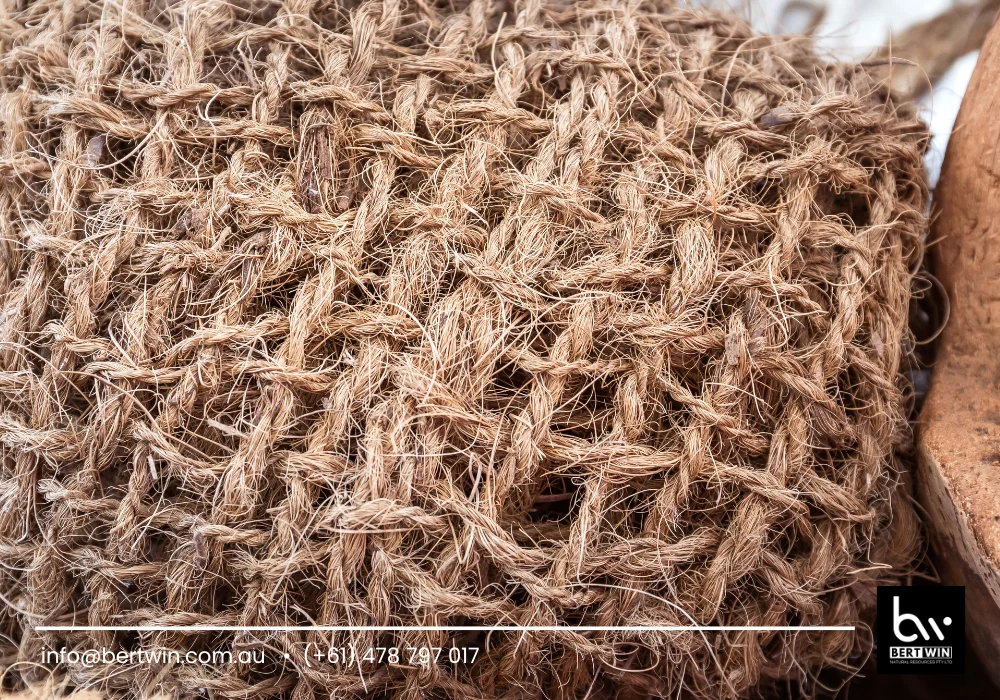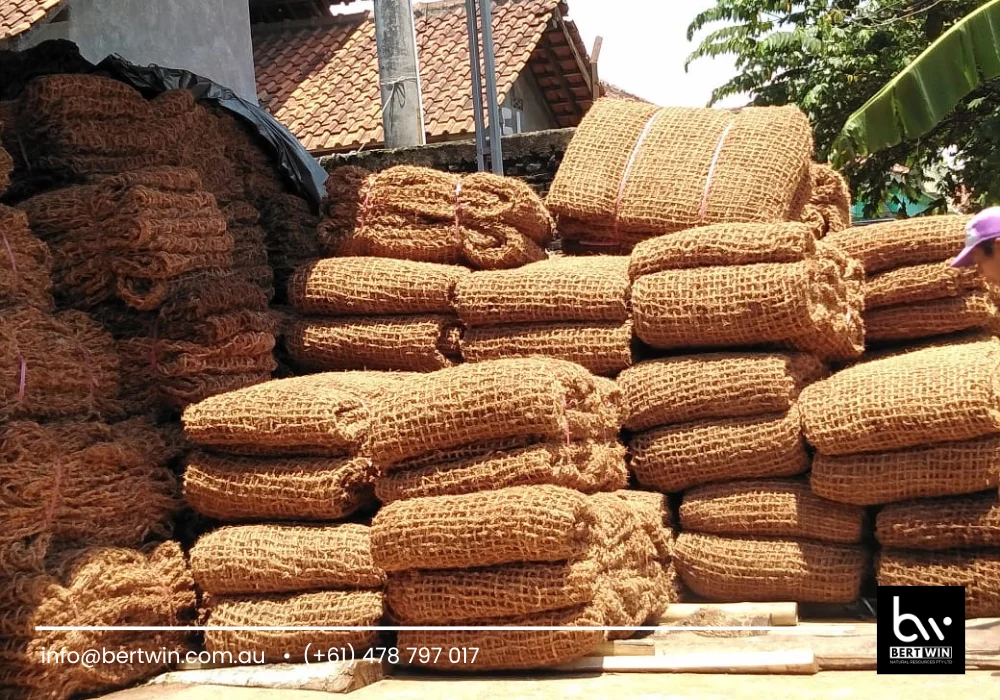Why Coco Mesh for Coastal Protection Is Gaining Popularity
The use of Coco Mesh for coastal protection has emerged as a sustainable solution to combat shoreline erosion and safeguard marine ecosystems. Made from 100% natural coconut coir fibers, coco mesh (also called coir netting or geotextile) is widely appreciated for its biodegradability, strength, and compatibility with various environmental restoration projects.

As coastal communities face the increasing threats of climate change, rising sea levels, and aggressive wave action, there is a growing need for effective, low-impact erosion control methods. Coco mesh addresses these challenges by providing a temporary yet strong framework that supports soil stability while enabling vegetation growth. It not only protects shorelines but also promotes biodiversity and natural regeneration of coastal areas.

How Coco Mesh Works for Coastal Protection
Coco mesh is typically woven into net-like mats using untreated coir fiber derived from the husk of mature coconuts. The mesh can be laid directly onto exposed soil or sand to reinforce the area and prevent further displacement due to wind or water.
1. Shoreline Stabilization
When placed along beaches, riverbanks, or coastal slopes, coco mesh helps hold sand and soil in place, reducing the risk of landslides or sediment washout. Its rough texture creates friction that minimizes surface runoff and wave-induced erosion.
2. Encouraging Vegetative Growth
One of the unique aspects of Coco Mesh for coastal protection is its ability to support plant life. The mesh provides a favorable microenvironment for seeds to germinate and roots to establish. Once vegetation takes hold, it reinforces the shoreline naturally, making it more resilient against future erosion.
3. Bio-Degradation Without Pollution
Unlike synthetic materials, coco mesh decomposes gradually over 3 to 5 years, depending on environmental conditions. As it breaks down, it enriches the soil with organic matter, eliminating the need for retrieval or disposal and leaving behind a fully restored natural landscape.
Common Applications of Coco Mesh in Coastal and Marine Areas
Coco mesh is versatile and can be adapted to a wide range of coastal protection projects, including:
- Beach rehabilitation: Installed along degraded coastlines to retain sand and encourage dune formation.
- Mangrove restoration: Used to stabilize mudflats and estuarine zones, providing structure for mangrove seedlings.
- Riverbank reinforcement: Prevents riverbank collapse during flooding or heavy rains.
- Slope protection: Applied to steep coastal cliffs to prevent erosion and facilitate reforestation.
- Sea wall support: Acts as an eco-friendly layer behind or in front of concrete sea walls to reduce soil loss.
These applications demonstrate coco mesh’s flexibility in both temporary and long-term erosion control systems.
Advantages of Using Coco Mesh for Coastal Protection
The adoption of Coco Mesh for coastal protection brings numerous ecological and practical benefits:
- Natural and Renewable: Made from coconut husks, which are a by-product of the coconut industry.
- Cost-Effective: Requires minimal maintenance and is more affordable than permanent concrete or metal barriers.
- Eco-Friendly: Non-toxic to marine life and does not release harmful residues into the environment.
- Flexible and Easy to Install: Can be rolled out and secured using wooden pegs or biodegradable stakes.
- Supports Sustainable Development Goals (SDGs): Particularly SDG 13 (Climate Action) and SDG 15 (Life on Land).
Because of these benefits, government agencies, NGOs, and coastal communities are increasingly adopting coco mesh as part of nature-based solutions to combat climate-induced shoreline degradation.
Considerations and Installation Tips
To ensure optimal performance, coco mesh must be installed correctly:
- Site Assessment: Analyze wave energy, slope gradient, and existing vegetation before application.
- Secure Installation: Use pegs or bamboo stakes to anchor the mesh tightly into the soil or sand.
- Seeding: For rapid revegetation, apply native grass or shrub seeds underneath or through the mesh.
- Maintenance: Regularly inspect the area, especially after storms, to ensure the mesh remains in place.
Choosing the right mesh density (from light to heavy-duty) is also essential depending on the intensity of wave action or rainfall.
Conclusion
The use of Coco Mesh for coastal protection reflects a harmonious approach to environmental management. By combining traditional materials with modern ecological practices, coco mesh offers an effective solution for erosion control that supports biodiversity, soil restoration, and community resilience.
Its ability to protect while biodegrading makes it an ideal choice for eco-conscious coastal projects, from small-scale landscaping to large government restoration efforts. As awareness of sustainable infrastructure grows, coco mesh is poised to become a cornerstone in coastal protection strategies worldwide.
For further information, you may contact WhatsApp at (+61) 478797017 or via email at info@bertwin.com.au.
